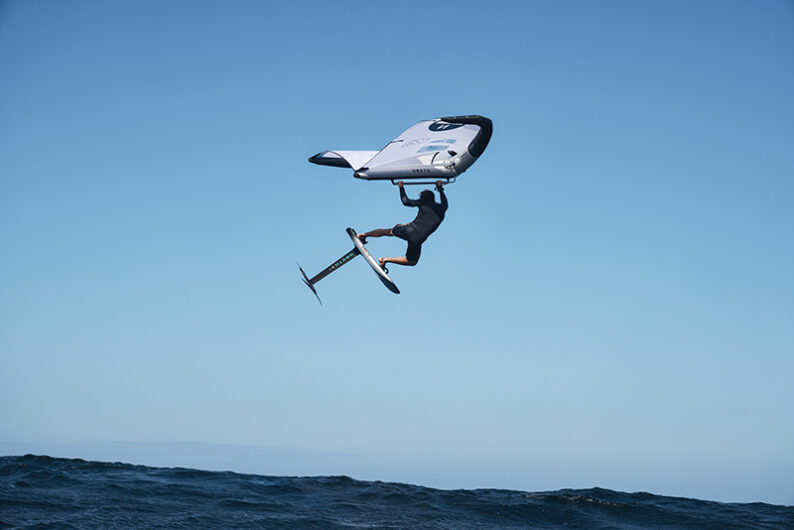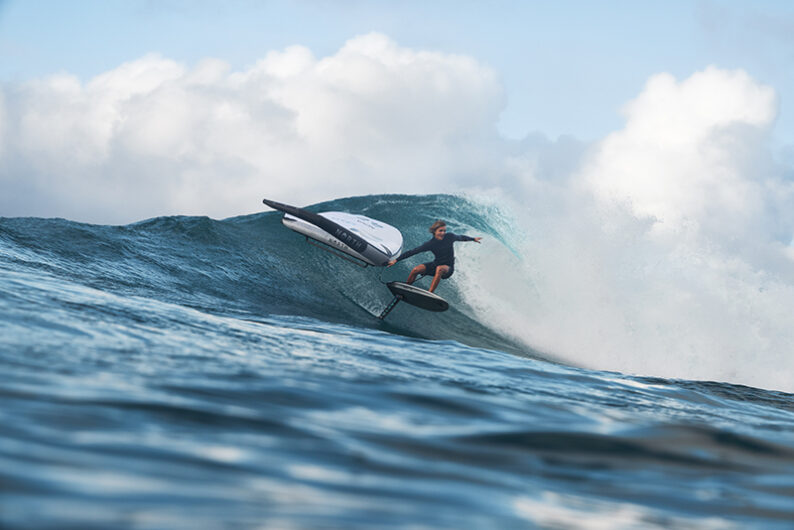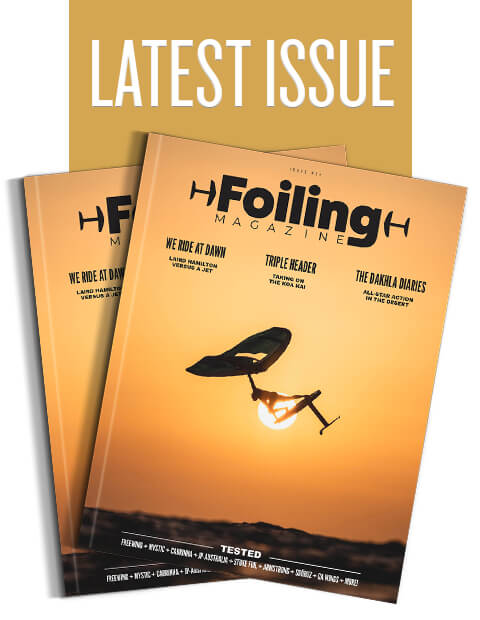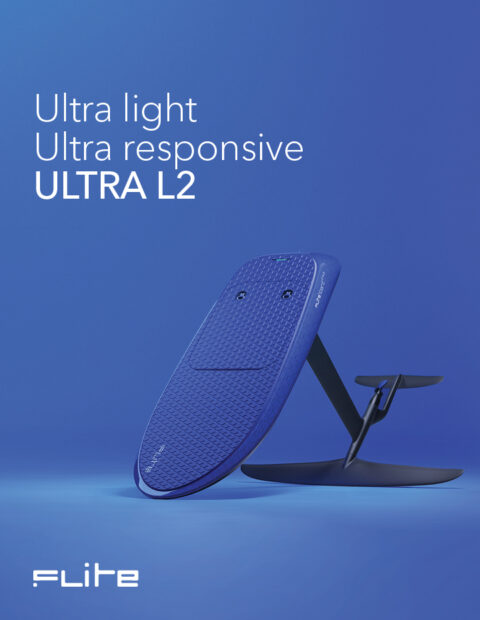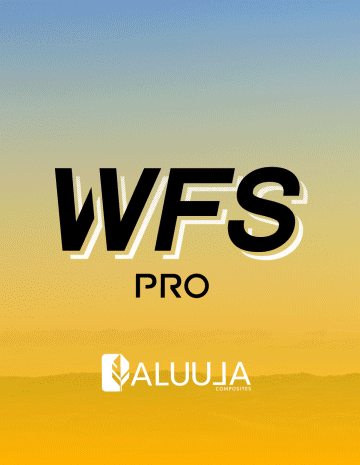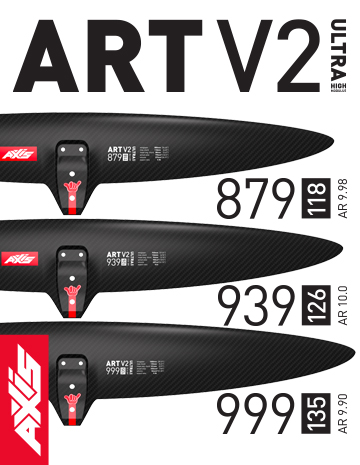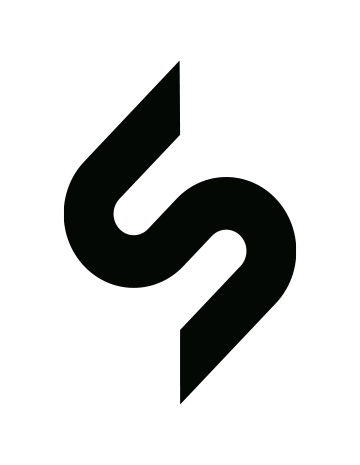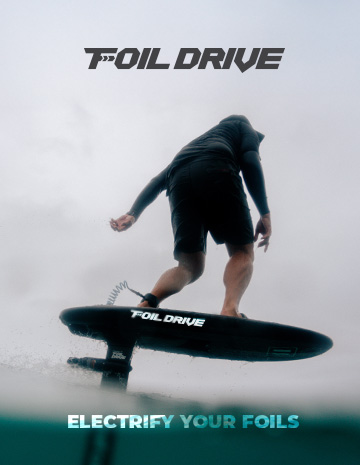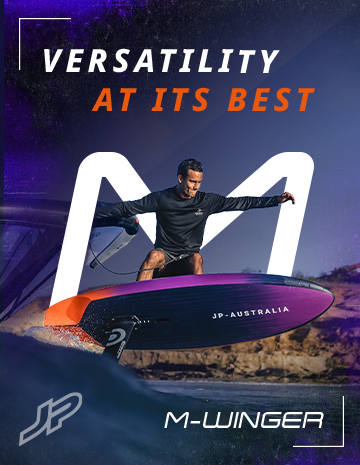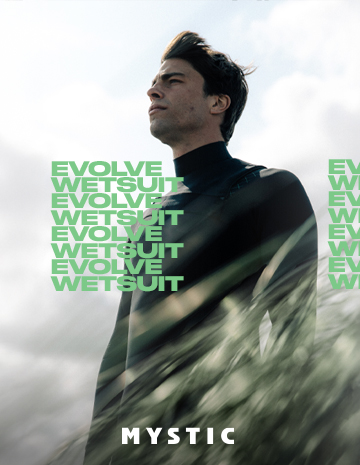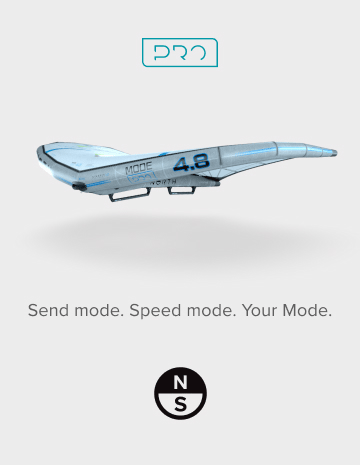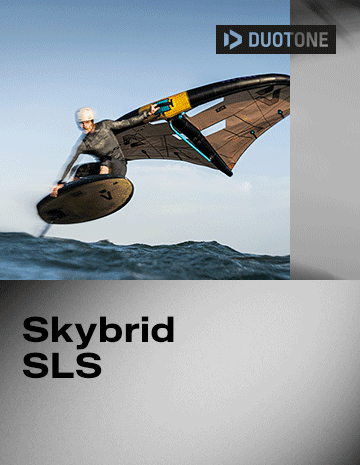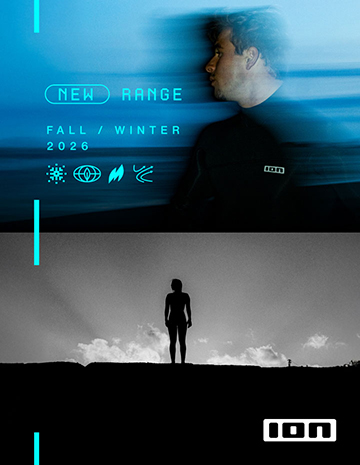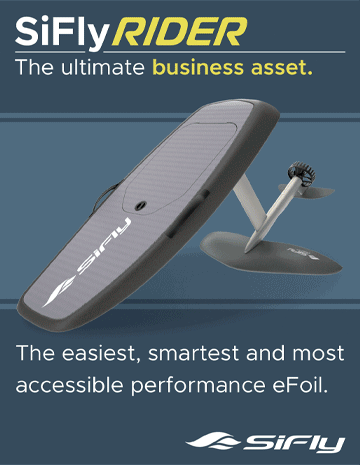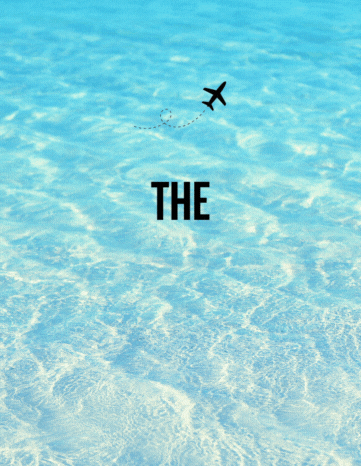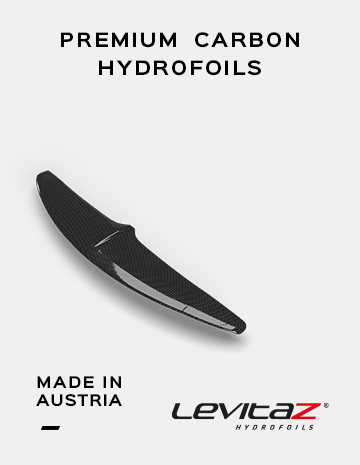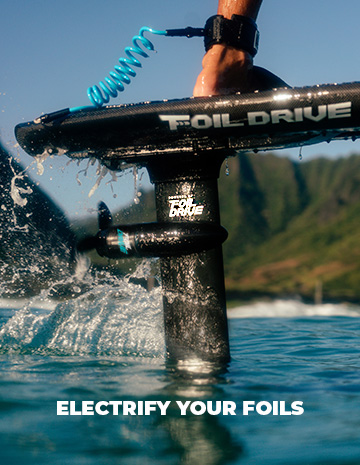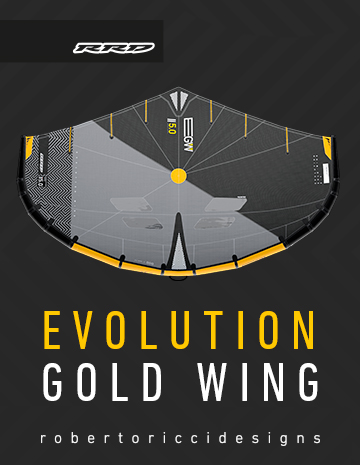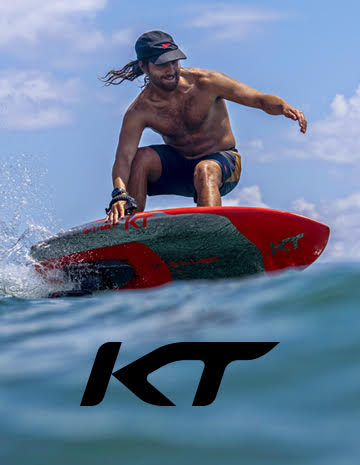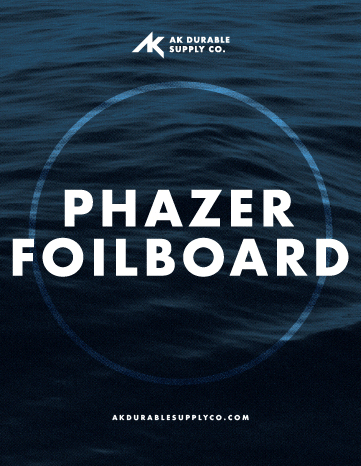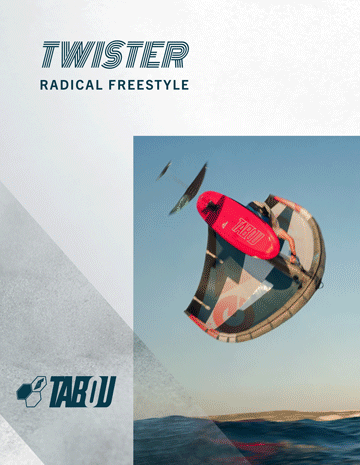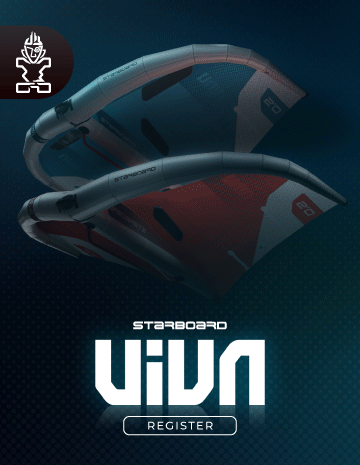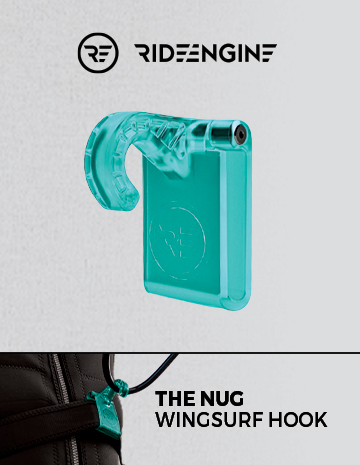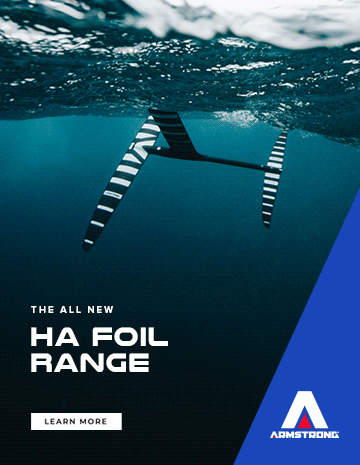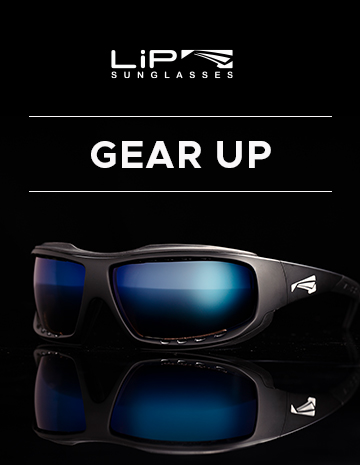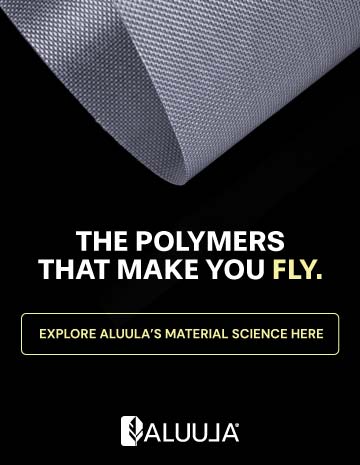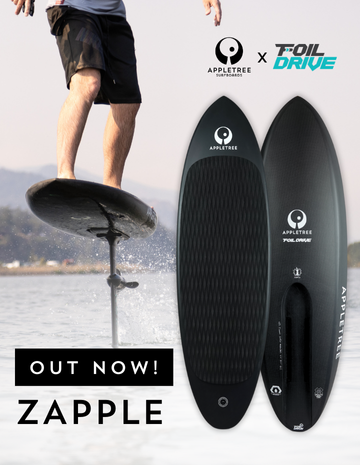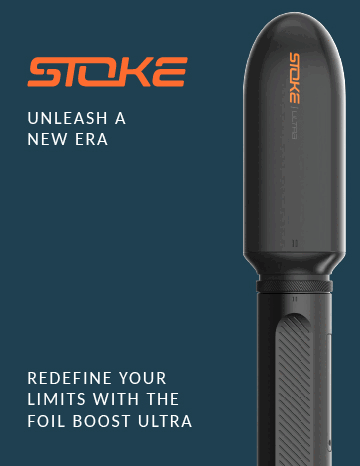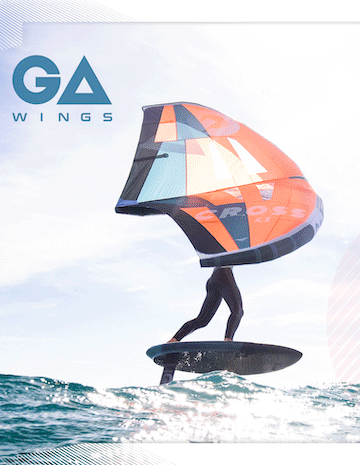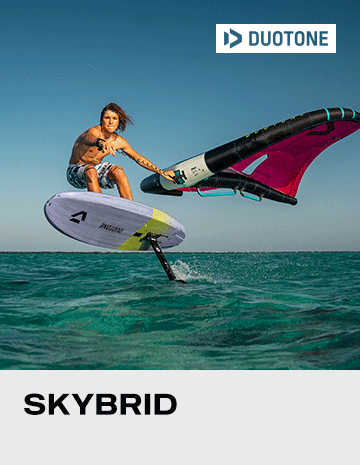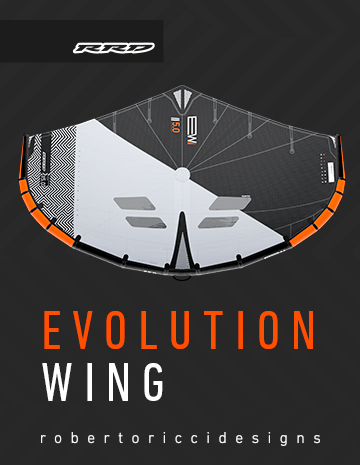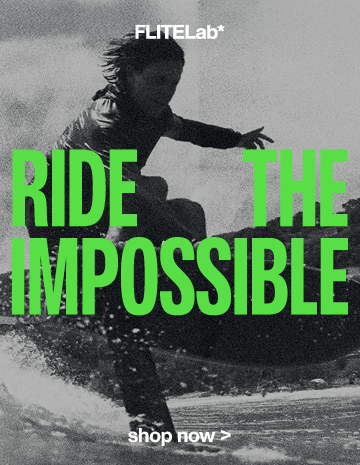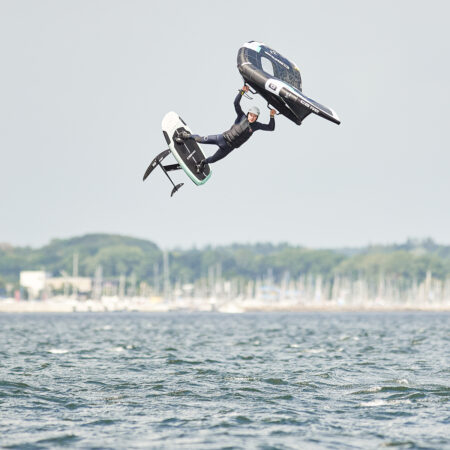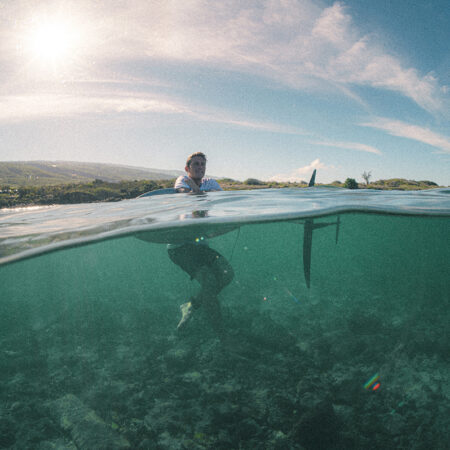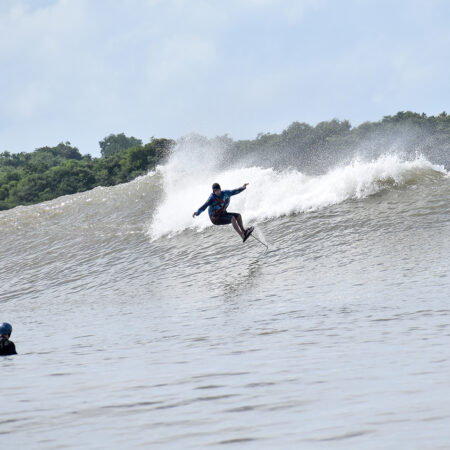The Innovators: North Shiftlock System
We spoke with North Foils’ Director of Design & Engineering, Hugh Pinfold, and Jeroen Hammer, Design Engineer at Fisher & Paykel Healthcare, to talk about the development of North’s new ShiftLock system, integrated into their new wing handle designs. We also couldn’t resist a little check in with North Foils’ Product Manager Uli Sommerlatt on the new North Nova Pro wing, upon which you’ll find the new ShiftLock system…
Hugh, firstly could you please give our readers a bit of an overview of the new ShiftLock system and how it’s integrated into the wing…
HP: ShiftLock is wing handle technology that allows for unlimited handle positions along a strong, lightweight and flexible track system that is part of the wing strut. We have various carbon handle lengths ranging from compact 250mm handles to 400mm, 500mm and the 1100mm boom. You can mix and match the sizes to suit your riding style and quickly shift them into position and lock them in place with North’s standardized T40 foil tool. North offers accessories that also easily lock onto the ShiftLock track, like an action camera mount or a SUP paddle shaft mount that can also work as an action camera pole mount.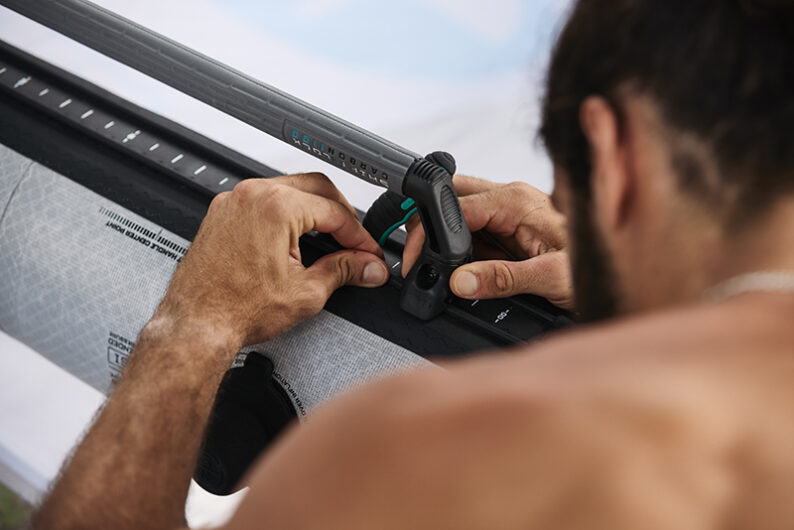
Jeroen, this was your concept initially. When did your idea first come about? What spurred you into coming up with it?
JH: I am more of a kitesurfer than a wingfoiler. Yet, just like everyone else, I looked at the emerging wingfoiling sport with interest. I probably would have dismissed it for a little longer if it wasn’t for a colleague who made the transition from kiting to winging and immediately got hooked on the sport. He really knew how to share the stoke and tried to convince me to get involved too. Maybe it’s my Dutch heritage, trying to save some money, or just my nature to make things myself, regardless, I decided to try and make a wing. I have experience in repairing kites and wings. I have a workshop at home with good sewing machines to make this a realistic option. I was comfortable with designing the 3D shape of the wing and even had a fair idea of how to construct it.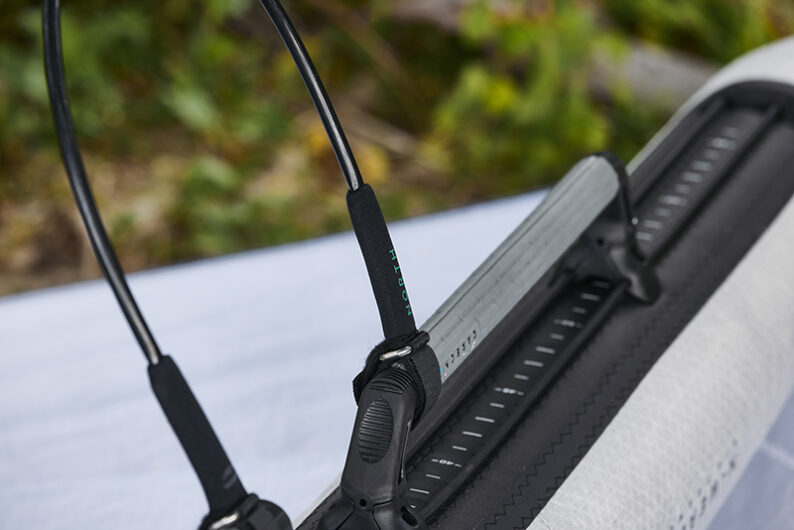
The status quo of wing design is that the position of the handles needs to be locked in place in the design well before finishing the sewing. There is no back and forth, no simple approach with trial and error on handle placement. This one thing, deciding on the exact position of the handles, was exactly what I was very insecure about. Being a product designer, that insecurity is paradoxically my comfort zone; a problem in need of a solution. We are surrounded with products that have already solved this problem albeit for different industries and with different functionalities. With hindsight we can probably all recognize the similarities with a slider on certain backpack straps. With the need of an adjustable handle in my mind, I saw an opportunity in these products; just add a good gripping functionality for locking the slider in place and craft it in the shape of a handle. This was also the moment I realized that there was a certain elegance and simplicity to this solution that might be of interest to manufacturers like North.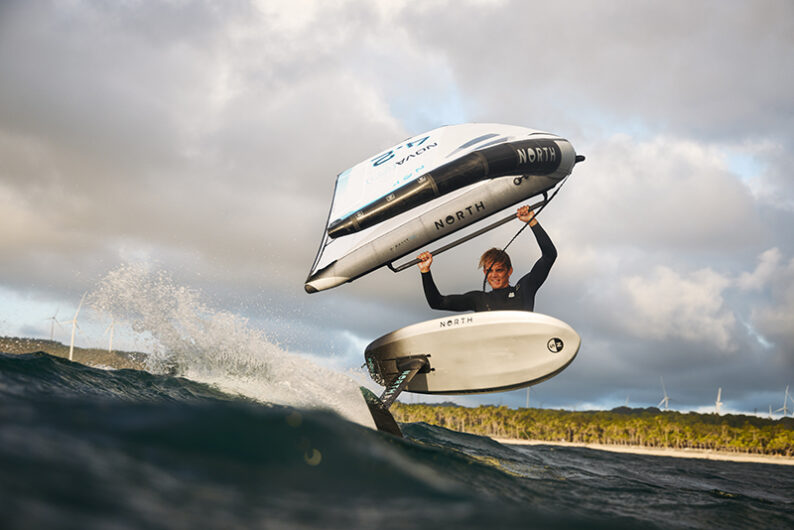
How did you go about getting in touch with the North team?
JH: We are incredibly lucky here in New Zealand with the culture and the presence of industries that rely on and encourage innovation. North is among the most notable of them. By coincidence there was already a connection between a group of kiters all working for Fisher and Paykel Healthcare and North. North had reached out to this group for a meet and greet over a lovely barbecue dinner at their premises. This is where I first met Hugh, Uli, Nick and quite a few more of the team. To illustrate the idea, and see if there was any interest, I made a very crude prototype. It consisted of a single, inflatable, center strut with a track (bolt-rope), 3D printed clamps and soft handles. None of the dimensions or properties were correct yet, but it was effective in illustrating all the functionality and its potential. This is what I presented to Hugh with the question if this was of any interest to North. The rest, as they say…
Once North began development, did you get to remain involved in consultations about the product?
JH: I certainly did, right up to this day. I’m very grateful to the team that they saw value in my continued involvement. And it’s a testament to the tenacity and commitment of the North team to now see how far we have taken this from its original idea to product launch. Especially in the early stages of the project, there were a lot of unknowns. It’s then that the concept is still very fluid and the main focus is on getting the minimum viable solution built to gain experience on the water. I was able to help with constructing the very first prototype. It takes a surprisingly large amount of prototypes, and hundreds of hours of testing to mature the idea and to build up confidence in the implementation of the concept. In addition, and something that might not be so obvious, I was able to help the team work on strategies to protect the idea as intellectual property.
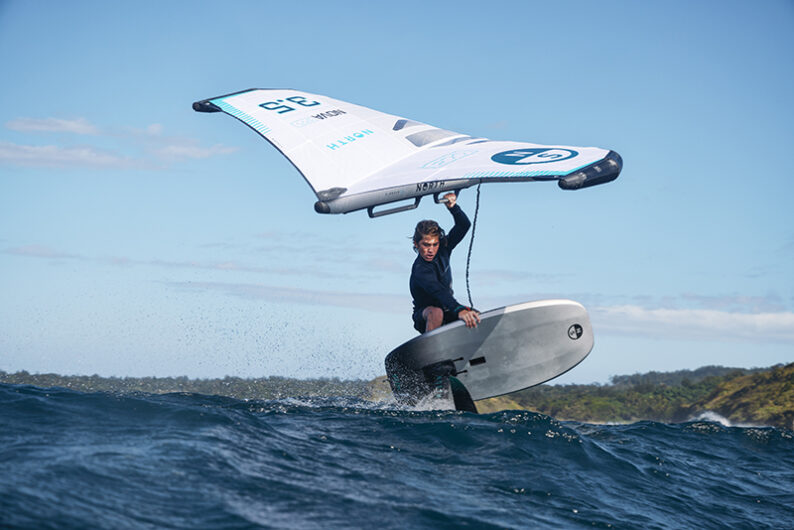
Hugh, what was it that first attracted you to Jeroen’s idea?
HP: It seems like everyone has differing ideas on how wing handles should be, whether it’s what length they should be, soft, semi-soft, rigid handles or a boom. What distance should the front handle be from the depower handle on the leading edge to make it easy to reach when starting? Should you be able to ride the wing one-handed so it’s perfectly balanced at the rear of the front handle? Two short rigid handles save weight, but you have to be more precise on grabbing the right place on the front handle during tacks. There are so many options. I just loved how we could offer infinite options to our customers to tweak their setup to their liking.
How did you begin turning Jeroen’s idea into something tangible?
HP: It didn’t take long for our whole product team to see the potential in a universal handle connection like this. We all agreed it was a great concept to pursue and divided up the project into parts, like assembly of the boltrope and the mechanics of the clamping system so we could be more efficient at taking it to the next level. The design brief was to come up with a robust yet intuitive wing handle solution with infinite user-defined positions. However, the end solution still had to provide the same rigid connection so the performance of our wings was not compromised. The handles and track still had to be lightweight, intuitive to use, ergonomic, comfortable and not damage your board.
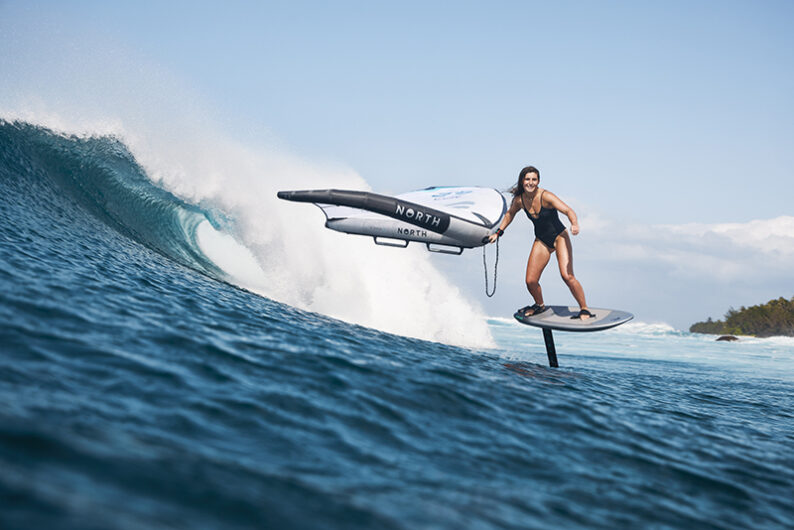 We started with a single bolt rope with stabilizing clamps to ensure the handles didn’t rock side to side. We soon discovered that a double bolt rope would provide a much more stable platform. We made tooling for a molded track and various sewn solutions. The sewn solutions were much lighter and had already been proven with North Sails for years. We split up into teams and worked on different clamping mechanisms. We started both vertical and horizontal load testing early on in the development cycle with prototype parts to ensure that we could clamp sufficiently tightly to the bolt rope track. Once we were confident the handles could take more than 700kg, we continued to refine the designs. The first handles were fiddly and difficult to line up on the track with the strut inflated, so we kept working through almost forty design iterations until we had it working intuitively. Our product design team has had a weekly meeting to review everything ShiftLock for the past two years to bring this project to market.
We started with a single bolt rope with stabilizing clamps to ensure the handles didn’t rock side to side. We soon discovered that a double bolt rope would provide a much more stable platform. We made tooling for a molded track and various sewn solutions. The sewn solutions were much lighter and had already been proven with North Sails for years. We split up into teams and worked on different clamping mechanisms. We started both vertical and horizontal load testing early on in the development cycle with prototype parts to ensure that we could clamp sufficiently tightly to the bolt rope track. Once we were confident the handles could take more than 700kg, we continued to refine the designs. The first handles were fiddly and difficult to line up on the track with the strut inflated, so we kept working through almost forty design iterations until we had it working intuitively. Our product design team has had a weekly meeting to review everything ShiftLock for the past two years to bring this project to market.
So elaborating a little on what you just mentioned, you’ve drawn on multiple existing tech through your North Sails heritage to bring to the ShiftLock, right?
HP: Yes, getting the best quality materials for the ShiftLock track system was a lot easier, with North Sails already having them proven on yacht boltrope masts/sails connections. Being able to prototype with existing materials that were already in stock certainly sped prototype testing up. We also had long-term North Sails gurus Steve Calder and Dave Little to help with the construction details.
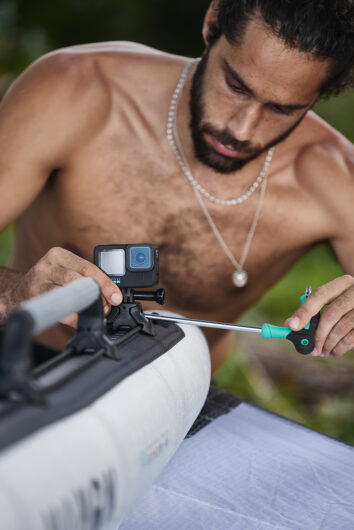 What other benefits are there to this system in contrast to others?
What other benefits are there to this system in contrast to others?
HP: The main benefit is that you can place the handles anywhere on the ShiftLock track to suit your riding style. We realized that the options could be overwhelming for newcomers to the sport so we have printed indicators on the strut clearly showing where you should line up the middle of the front and rear handles or boom if you are unsure of a starting point.
There is no need to deflate the strut to assemble the ShiftLock handles, you just loosen the T40 screw off three to four turns, and they snap onto the track. Then tighten three to four turns, and they’re locked in place again. To adjust the position of the handles, all you do is loosen the screw by one turn, which is enough to allow the handles to slide up and down to your desired position, then lock off in position with a single turn again.
Mounting an action camera on the front of the ShiftLock track or rear (looking forward) makes life easy. We even have a couple of mounts that will allow you to fasten a pole with a camera on the end or a SUP paddle for those into downwind.
Finally, Uli, you’re just releasing the new Nova Pro, too. Tell us a little about that, and how it differs from the standard Nova…
US: The Nova Pro features an N-Weave45 strut and leading edge center segment. The ShiftLock track adds stiffness to the strut, making this wing even more reactive and direct, and having the hybrid construction in the airframe helps us further reduce the wing's overall weight. The N-Weave45 segment in the center of the LE provides the stiffness where you need it, while it allows the tips of the LE to actively twist out. This creates this unique ride performance of a crisp input response yet a forgiving wing tip that twists off nicely during freestyle maneuvers or wave riding. When you stiffen the wing’s frame, it is also important to go for a stiffer canopy as the loading on the canopy increases due to the stiffer airframe. For this reason, the Nova Pro also features a hybrid canopy with our stiffer MATRIX canopy in the high-load areas, while in the front, a third of the canopy uses a lighter-weight N-HTRS canopy material. The extra load-carrying capacity contributes to the high-performance feel of the wing and increases the wing range. The Nova Pro features the same profile and outline as the Nova. However, the advanced materials used boost the wing's performance. It is basically the Nova on steroids.


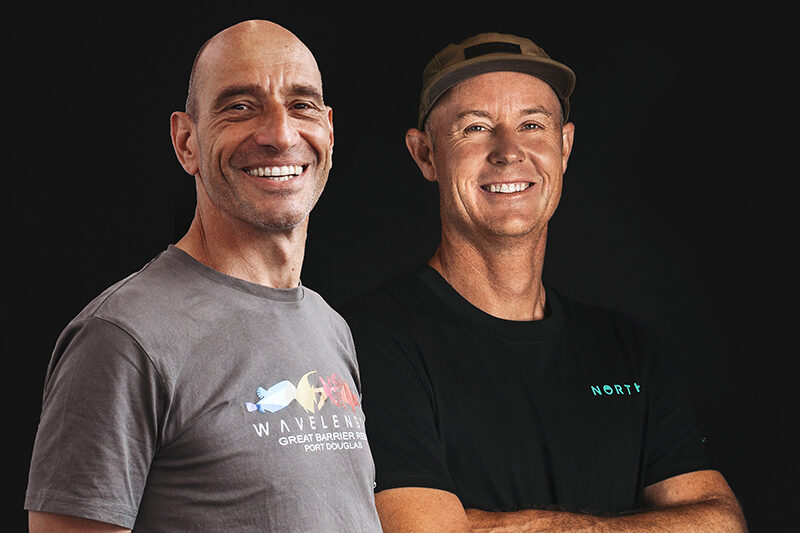




 We started with a single bolt rope with stabilizing clamps to ensure the handles didn’t rock side to side. We soon discovered that a double bolt rope would provide a much more stable platform. We made tooling for a molded track and various sewn solutions. The sewn solutions were much lighter and had already been proven with North Sails for years. We split up into teams and worked on different clamping mechanisms. We started both vertical and horizontal load testing early on in the development cycle with prototype parts to ensure that we could clamp sufficiently tightly to the bolt rope track. Once we were confident the handles could take more than 700kg, we continued to refine the designs. The first handles were fiddly and difficult to line up on the track with the strut inflated, so we kept working through almost forty design iterations until we had it working intuitively. Our product design team has had a weekly meeting to review everything ShiftLock for the past two years to bring this project to market.
We started with a single bolt rope with stabilizing clamps to ensure the handles didn’t rock side to side. We soon discovered that a double bolt rope would provide a much more stable platform. We made tooling for a molded track and various sewn solutions. The sewn solutions were much lighter and had already been proven with North Sails for years. We split up into teams and worked on different clamping mechanisms. We started both vertical and horizontal load testing early on in the development cycle with prototype parts to ensure that we could clamp sufficiently tightly to the bolt rope track. Once we were confident the handles could take more than 700kg, we continued to refine the designs. The first handles were fiddly and difficult to line up on the track with the strut inflated, so we kept working through almost forty design iterations until we had it working intuitively. Our product design team has had a weekly meeting to review everything ShiftLock for the past two years to bring this project to market. What other benefits are there to this system in contrast to others?
What other benefits are there to this system in contrast to others?